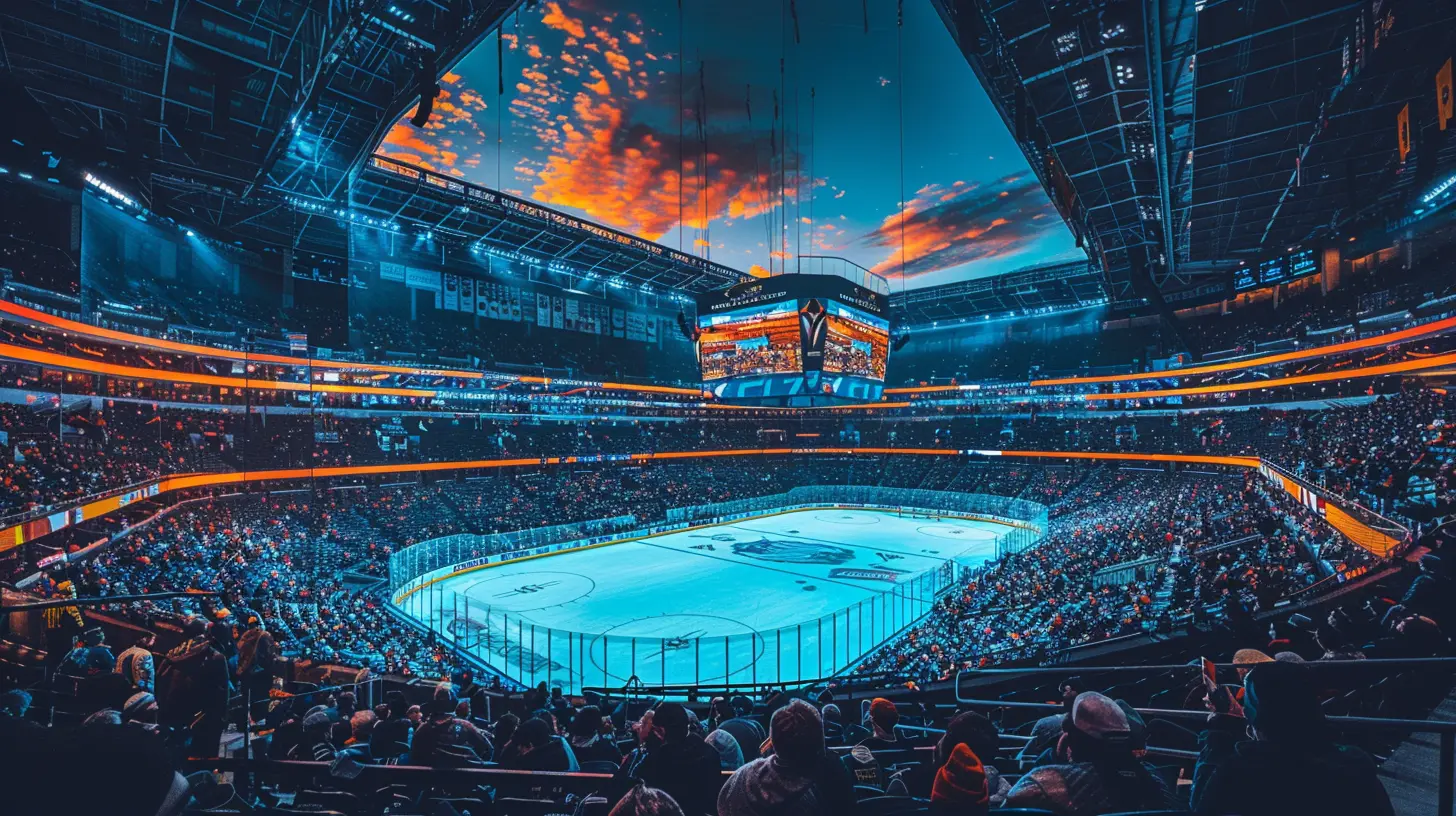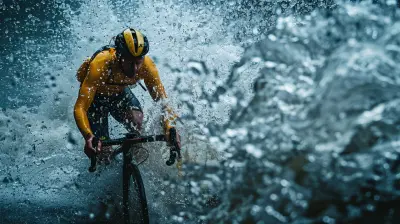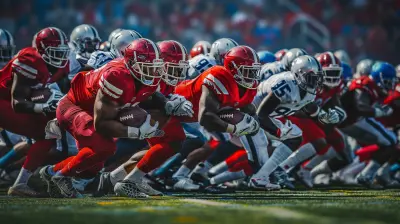How Sponsorship Deals are Shaping the Future of Sports
23 July 2025
Let’s be real—sports aren't just about athletic talent anymore. Sure, an epic buzzer-beater or a game-winning goal still gets our adrenaline pumping, but let’s talk about the real MVP behind the scenes: money. More specifically, sponsorship money.
Sponsorship deals have gone from slapping a brand logo on a player’s jersey to becoming a full-blown driving force behind how sports are played, watched, and even understood. From massive endorsements to digital partnerships and naming rights, sponsorships are pulling more weight than ever. And guess what? It’s changing the game—literally.
In this piece, we’re diving deep into how sponsorship deals are shaping the future of sports. Whether you’re a die-hard fan, an aspiring sports marketer, or just someone who's curious, buckle up—you're in for a wild ride.
What Exactly Is a Sponsorship Deal?
Before we go too far, let’s get on the same page.A sponsorship deal is when a brand pays (in cash, goods, or services) to be associated with a team, athlete, league, or event. Think Nike sponsoring LeBron James, Red Bull owning an F1 team, or Emirates sponsoring entire stadiums.
But it’s more than just money changing hands—it’s a partnership. The brand gets exposure and credibility, and the athlete or organization gets funding, gear, resources, or even cutting-edge tech.
It's a win-win, right? Well, mostly.
The Rise of Sponsorships in Modern Sports
From Banners to Billion-Dollar Deals
Sponsorships aren’t new. Remember when companies just put a banner on the side of a stadium? That was child’s play compared to today. Now, sponsorships are strategic, data-driven, and global in reach.For example, Adidas and Nike don’t just sell shoes—they sell entire athlete personas. Teams don’t just wear sponsored gear—they play in branded arenas, post sponsored content, and even travel in sponsored vehicles.
Take the NFL or the English Premier League. We’re talking billions of dollars in sponsorship revenue annually. It’s not some side hustle—it's a foundational part of the business model.
How Sponsorships Are Influencing Sports at Every Level
1. Athlete Branding and Personal Sponsorships
Let’s start at the top: the athletes.Today’s athletes aren’t just players—they’re individual brands. Think of Serena Williams, Cristiano Ronaldo, or Patrick Mahomes. They’ve got their own logos, fashion lines, and dedicated social media teams. And brands? They’re lining up to ride the wave.
Sponsorships let athletes extend their reach beyond the game. With the right deal, a player can earn more off the field than on it. LeBron reportedly makes more from Nike than from the Lakers. That’s wild.
But it also means athletes are more image-conscious than ever. Good behavior, social media polish, and charitable work often come with commercial incentives. Sponsorships are shaping not just how athletes play, but how they act.
2. Team and League Identity
Ever noticed how many teams have names or jerseys tied to brands?Some leagues have gone so far as to let sponsors slap logos right on uniforms—something that would've been taboo just a decade ago in certain sports. The NBA started jersey sponsorships in 2017. And guess what? It’s raking in millions annually.
Stadium naming rights are another big piece of the pie. Think “Crypto.com Arena” instead of the Staples Center. That’s not just a name change—it’s a brand taking center stage in our sports culture.
Teams now often align their identity with their biggest sponsors, creating hybrid brands that are as much marketing as they are sports.
3. Event Sponsorships: Sports Marketing on Steroids
Big events like the Olympics or the Super Bowl are like the Super Bowl (pun intended) of sponsorship opportunities.Coca-Cola, Visa, Samsung—these brands pour hundreds of millions into sponsoring these events, not just for visibility but for emotional connection. Sports are emotional, and brands want a slice of that loyalty.
Events now often base hosting decisions, advertisements, and even rules around sponsor needs. It’s no exaggeration to say brands sometimes influence how events are run.
4. Youth and Developmental Sports
Even grassroots and amateur sports are getting in on the action.Local teams are sponsored by small businesses. College teams have multi-million-dollar sponsorships. The NCAA recently allowed athletes to monetize their Name, Image, and Likeness (NIL), opening a flood gate of new deals for student-athletes.
This shift means young athletes are learning the business side of sports earlier than ever. A high schooler with a TikTok following and a solid jump shot might land a brand deal before they ever hit the college court.
The Digital Transformation of Sports Sponsorship
Enter: Social Media & Streaming Partnerships
Social media has flipped the sponsorship game on its head.Now, it's not just about slapping a logo on a jersey. It’s about Instagram stories, TikTok dances, YouTube vlogs, and Twitter beefs. Brands want athletes who can drive engagement. Sponsorships are often tied to followers, likes, shares, and overall reach.
And let’s not forget streaming. Services like Amazon Prime, Apple TV+, and YouTube are bidding on streaming rights—and with that comes a whole new world of sponsored content and branded viewer experiences.
It’s a content arms race, and brands are using sponsorships to stay one step ahead.
Virtual Reality, NFTs, and the Metaverse
Sports sponsorship is going digital in ways we couldn’t have imagined ten years ago.Brands are sponsoring digital experiences—from virtual arenas to athlete NFTs. Fans can attend virtual watch parties or buy NFT-based memorabilia that's sponsored by major brands.
It's not just the real world anymore. Sponsorship is crossing into digital dimensions.
The Pros and Cons of Sponsorship in Sports
The Good
- Increased Funding: Better equipment, facilities, salaries, and training.- Expanded Reach: Sponsorship helps sports break into new markets.
- Athlete Empowerment: Athletes can build their own brands and income streams.
- More Engagement: Fans get access to behind-the-scenes content and unique experiences.
The Bad
- Over-Commercialization: There's a fine line between sponsorship and selling out.- Sponsor Influence: Brands sometimes influence game rules, player behavior, or even who plays.
- Youth Pressure: Young athletes may feel commercial pressure too early.
- Fan Alienation: Traditional fans may feel disconnected from hyper-commercialized leagues.
So, What’s the Future of Sports Sponsorship?
It’s not slowing down—if anything, it’s evolving.Expect:
- Hyper-Personalized Deals: Brands targeting niche audiences through specific athletes.
- AI & Data-Driven Sponsorships: AI will help brands find the perfect match in athletes or teams.
- Sustainability Sponsorships: Eco-friendly brands teaming with athletes who support causes.
- Global Expansion: More cross-border partnerships as sports continue to globalize.
Basically, the relationship between sports and sponsorship is only going to get tighter. But the challenge will be maintaining a balance—keeping the soul of sports while embracing the financial boost.
Final Thoughts
At the end of the day, sports are about passion—about that last-minute goal, the underdog win, the joy, and the heartbreak. But behind every iconic moment, there’s often a brand helping foot the bill.Sponsorships are shaping the future of sports, not just financially, but culturally and even ethically. The challenge for athletes, teams, and fans will be how to embrace those changes without losing the essence of what makes sports so magical.
Because while money talks, heart still wins games.
all images in this post were generated using AI tools
Category:
Sponsorship DealsAuthor:

Uziel Franco
Discussion
rate this article
1 comments
Kason Franco
Great insights! It’s fascinating to see how sponsorship deals are driving innovation and growth in sports. Excited to see what the future holds!
August 5, 2025 at 2:45 AM

Uziel Franco
Thank you! I appreciate your thoughts and share your excitement for the future of sports and innovation!


